Abstract
Objective
Methods
Results
Notes
References
Figure 1
The cone-beam computed tomography image of the craniofacial region using InvivoDental 5.1 software. The transverse (A), sagittal (B), and coronal planes (C) are indicated.

Figure 2
Angle between the axis and the buccal cortex (Premo ax/bucc cort), and angle between the axis and the lingual cortex (Premo ax/ling cort). A representative cone-beam computed tomography image of the mandible through the coronal plane is shown.
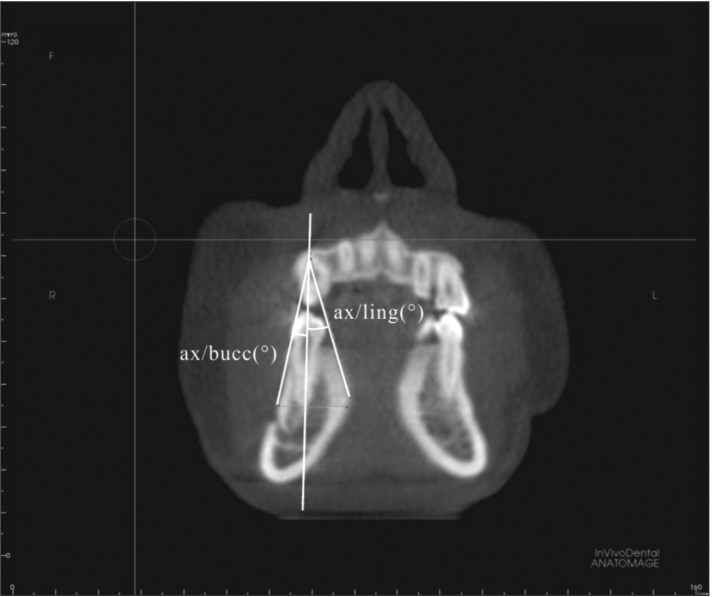
Figure 3
Alveolar thickness and height measurements. A representative cone-beam computed tomography image of the mandible through the coronal plane is shown. Bucc, Buccal; Ling, lingual.
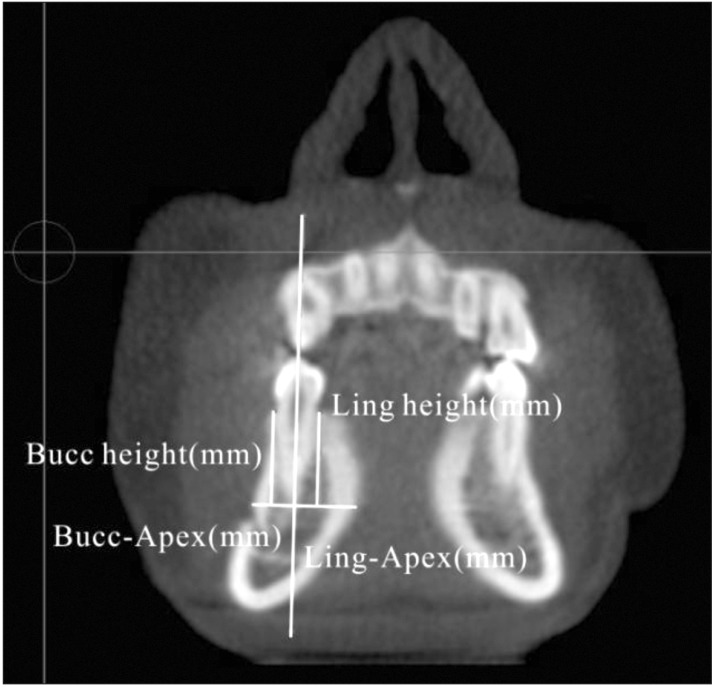
Figure 4
Distance from the resistance center of the mandibular premolar to its apex (R center-Apex) , and distance from the apex to the mandible edge (Apex-Mand edge). A representative cone-beam computed tomography image of the mandible through the coronal plane is shown.
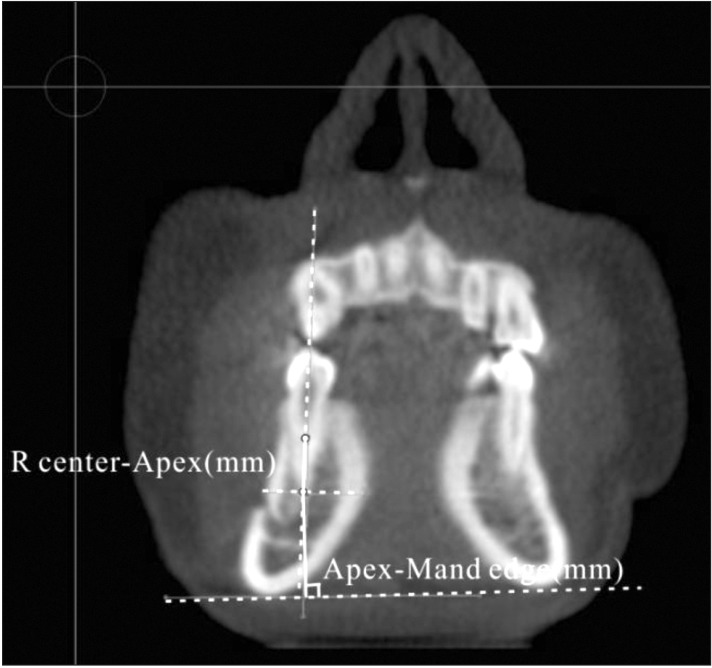
Figure 5
Parameters indicating the range in tooth movement. A, Measurement of the vestibularization and lingualization angles (Ang vestibule and Ang lingual). B, Measurement of the vestibularization and lingualization arcs (Arc vestibule and Arc lingual). A representative cone-beam computed tomography image of the mandible through the coronal plane is shown.
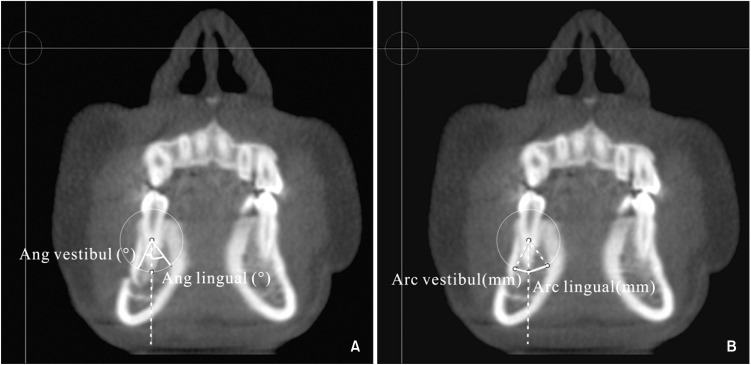
Table 1
Parameters indicating the mandibular first premolar position in Class I subjects grouped into three different facial types
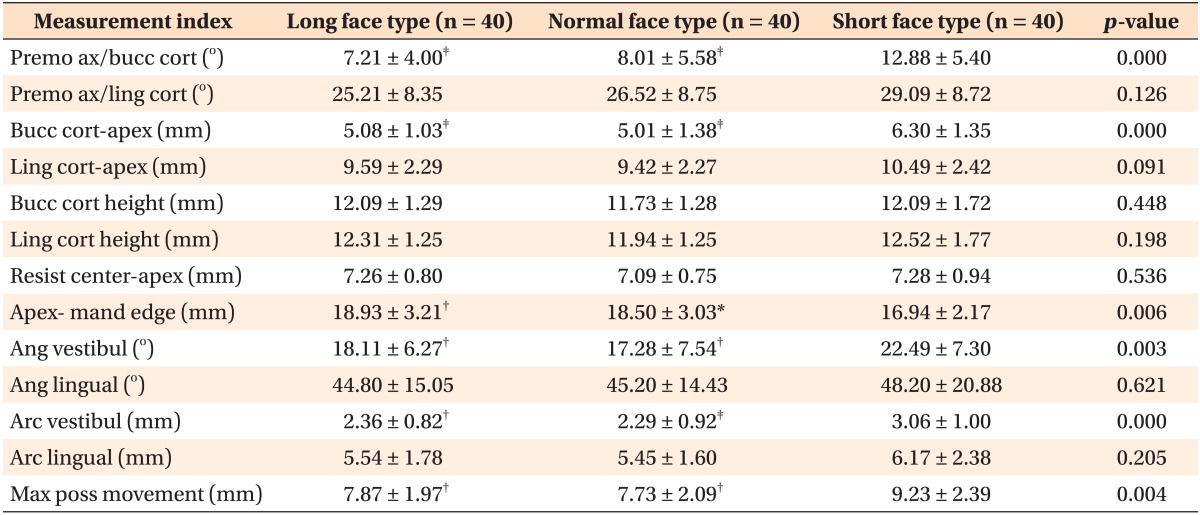
Values are presented as mean ± standard deviation.
All values compared to the short face type.
*p < 0.05; †p < 0.01; ‡p < 0.001.
Premo ax/bucc cort, angle between the axis and the buccal cortex; Premo ax/ling cort, angle between the axis and the lingual cortex; Bucc cort-apex, the distance between the mandibular premolar root apex and the buccal cortical bone; Ling cort-apex, the distance between the mandibular premolar root apex and the lingual cortical bone; Bucc cort height, heights of the buccal alveolar bone; Ling cort height, the heights of the lingual alveolar bone; Resist center-apex, distance from the resistance center of the mandibular premolar to its apex; Apex- mand edge, distance from the apex to the mandible edge; Ang vestibule, angle of vestibularization in which one of the two sides corresponded to the distance between the center of resistance and the point at which the apex contacted the internal buccal cortex; Ang lingual, angle of lingualization in which one of the two sides corresponded to the distance between the center of resistance and the point at which the apex contacted the internal lingual cortex; Arc vestibule, arc of vestibularization, defined as the distance traveled by the apex until it contacted the internal buccal cortex during vestibularization, indicating the maximum possible inclination of the apex in the buccal direction without provoking resorption; Arc lingual, arc of lingualization, defined as the distance traveled by the apex until it contacted the internal lingual cortex during lingualization, indicating the maximum possible inclination of the apex in the lingual direction without provoking resorption; Max poss movem: maximum possible movement, defined as the sum of the arcs of vestibularization and lingualization.
Table 2
Parameters indicating the mandibular second premolar position in Class I subjects grouped into three different facial types
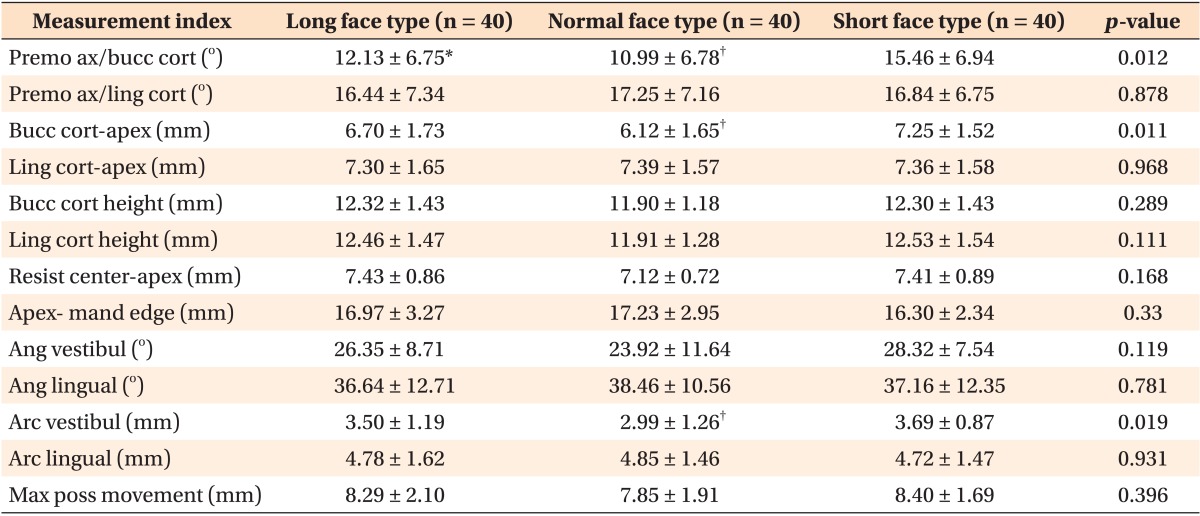
Values are presented as mean ± standard deviation.
All values compared to the short face type.
*p < 0.05; †p < 0.01.
See the footnotes of Table 1 for the abbreviations.




 PDF
PDF ePub
ePub Citation
Citation Print
Print


 XML Download
XML Download